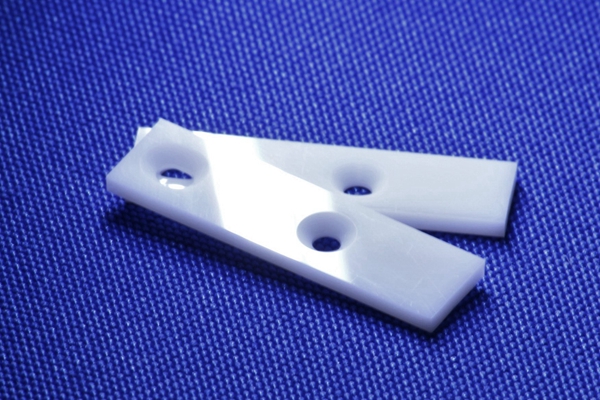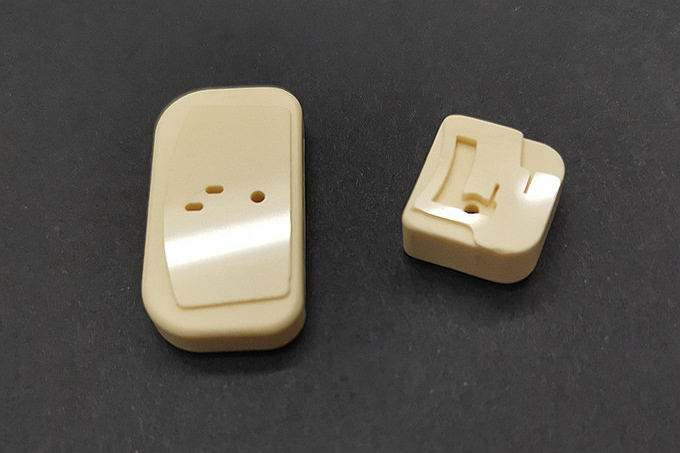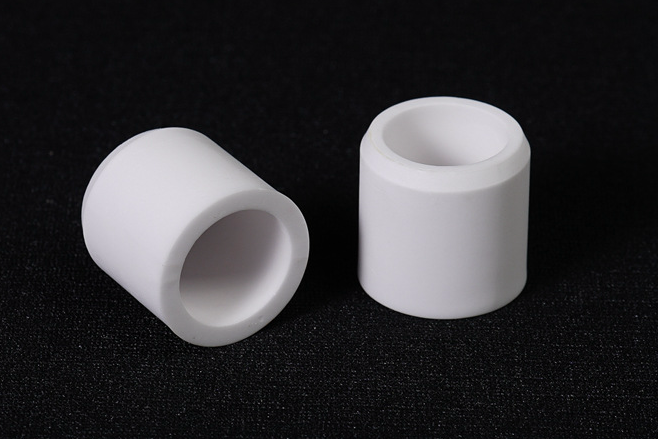Ceramic Injection Molding | Ceramic Material and Application
The demand for high-performance parts and components is rising in today's rapidly advancing industries. For buyers and part design engineers seeking superior quality and intricate designs, ceramic injection molding (CIM) emerges as a groundbreaking solution. This blog post aims to provide a comprehensive overview of CIM, its significance in part design, an exploration of ceramic materials, their properties, and the advantages of choosing a CIM supplier for your specific needs.
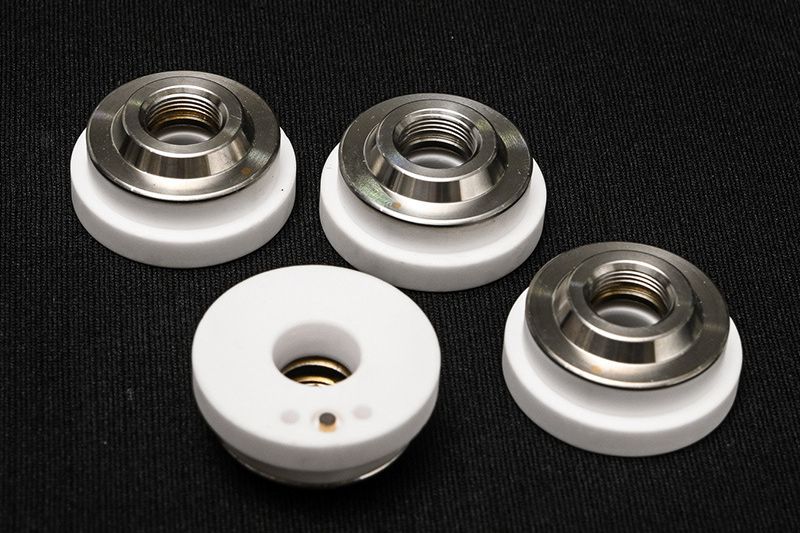
Definition of Ceramic Injection Molding (CIM)
Ceramic injection molding (CIM) is a versatile manufacturing process that enables the production of complex ceramic parts with exceptional precision. By combining the principles of traditional plastic injection molding and ceramic powder technology, CIM allows for the efficient mass production of intricate ceramic components. The process involves the injection of a ceramic powder-filled binder into a mold cavity, followed by debinding and sintering to achieve the final ceramic part.
Brief History of CIM
Ceramic injection molding, also known as ceramic molding, has emerged as a breakthrough manufacturing process that revolutionizes the production of ceramic parts. By integrating the well-established polymer injection molding technique with ceramic preparation methods, Ceramic Injection Molding (CIM) offers unparalleled advantages for fabricating high-precision ceramic components with intricate geometries.
Drawing inspiration from the successful development of metal injection molding (MIM) in the 1970s, CIM and MIM share a common lineage as prominent branches of the powder injection molding (PIM) family. Both technologies have leveraged the advancements in polymer injection molding to push the boundaries of ceramic and metal part manufacturing.
In the quest to mass-produce ceramic products exhibiting exceptional dimensional accuracy and intricate designs, ceramic powder molding has emerged as the most promising and advantageous solution. This innovative process seamlessly integrates complex features, such as undercuts, thin walls, and internal cavities, into the final ceramic parts. The combination of design flexibility and high reproducibility makes CIM a preferred choice for industries that demand precision, reliability, and cost-effectiveness.
Importance of CIM for Part Design
Ceramic injection molding revolutionizes how part design engineers approach the production of ceramic components. Its ability to create intricate geometries, thin walls, and complex shapes opens up a world of design possibilities. CIM eliminates the limitations of traditional ceramic manufacturing methods, enabling the production of high-quality parts with enhanced functionality and performance.
Ceramic Material Overview
Ceramic materials, known for their exceptional properties, have been utilized across various industries for centuries. Understanding the different types of ceramic materials is crucial in determining the optimal choice for your specific application.
What are Ceramic Materials?
Ceramic materials are inorganic, non-metallic compounds with a wide range of properties, including high strength, temperature resistance, electrical insulation, and chemical inertness. These materials typically comprise metallic and non-metallic elements bonded together through ionic or covalent bonds.
Ceramic Material Classification
Ceramic injection molding (CIM) is a highly efficient and precise manufacturing process that enables the production of complex ceramic components with superior properties. CIM utilizes the principles of traditional plastic injection molding, but instead of plastics, ceramic powders are used as the raw material. This innovative technique has revolutionized the field of ceramic molding by providing cost-effective solutions for various industries. To simplify the categorization of ceramic materials, they can be classified into several categories based on their characteristics and applications. The main categories include:
Structural Ceramics
These ceramics possess excellent mechanical strength and are commonly used in load-bearing applications. Examples include alumina (Al2O3), silicon nitride ceramics (Si3N4), Silicon carbide ceramics (Sic), and zirconia (ZrO2).
Alumina ceramics (Al2O3), one of the prominent materials used in ceramic injection molding, consist primarily of aluminum oxide (Al2O3) with a minimum content of 45%. Alumina CIM parts properties exhibit exceptional properties such as high-temperature resistance, making them suitable for prolonged use at temperatures up to 1600 °C. These ceramics also possess remarkable corrosion resistance and high strength, surpassing ordinary ceramics by 2 to 3 times, with some variants achieving 5 to 6 times the strength. However, their brittleness renders them susceptible to abrupt changes in ambient temperature. Alumina ceramics find extensive applications as crucibles, engine spark plugs, high-temperature refractory materials, thermocouple casings, sealing rings, cutting tools, and molds.
Silicon nitride ceramics (Si3N4), composed primarily of silicon nitride (Si3N4), are renowned for their high-temperature strength, exceptional hardness, wear resistance, corrosion resistance, and self-lubricating properties. Among various ceramics, silicon nitride ceramics exhibit the lowest coefficient of linear expansion, allowing them to withstand service temperatures as high as 1400 °C. These ceramics demonstrate excellent resistance to corrosion from various acids, alkalis, and metals, except for hydrofluoric acid. Moreover, they possess remarkable electrical insulation and radiation resistance. Silicon nitride ceramics are employed in high-temperature bearings, sealing rings for corrosive media, thermocouple sleeves, and metal cutting tools.
Silicon carbide ceramics (SiC), comprising silicon carbide (SiC) are distinguished by their exceptional strength, hardness, and high-temperature resistance. Even when subjected to temperatures ranging from 1200 °C to 1400 °C, silicon carbide ceramics retain their high flexural strength, making them the most robust at elevated temperatures. Additionally, these ceramics exhibit excellent thermal conductivity, oxidation resistance, electrical conductivity, and high impact toughness. Silicon carbide ceramics serve as excellent high-temperature structural materials, finding application in components such as rocket tail nozzles, thermocouple casings, and furnace tubes. The combination of high hardness and wear resistance also enables their use in grinding wheels and abrasives, making them ideal for high-temperature heat exchangers.
Neway Precision, a professional CIM manufacturer among ceramic injection molding companies, specializes in leveraging the advantages of CIM to produce intricate ceramic components with exceptional precision and consistency. Neway has expertise in working with various ceramic injection molding materials, including alumina, silicon nitride, and silicon carbide. By employing advanced manufacturing techniques and state-of-the-art machinery, they ensure the production of high-quality ceramic components that meet the demanding requirements of diverse industries. Ceramic injection molding has opened up new possibilities in ceramic manufacturing. Alumina ceramics, silicon nitride, and silicon carbide ceramics, each with unique properties, offer various applications across various industries. The advancements in ceramic injection molding technology and the expertise of ceramic injection molding companies have paved the way for producing intricate and high-performance ceramic components, enabling innovation and progress in numerous fields.
Tool Ceramics
Tool ceramics exhibit exceptional hardness and wear resistance, making them suitable for cutting tools, molds, and dies.
Functional Ceramics
Functional ceramics possess specific electrical, magnetic, or optical properties. They find applications in electronic devices, sensors, and actuators.
Ceramic Type | Performance Characteristics | Main Components | Applications |
Dielectric | Insulating properties | Al2O3, Mg2SiO4 | Integrated circuit substrates |
Thermoelectric properties | PbTiO3, BaTiO3 | Thermistor | |
Piezoelectric properties | PbTiO3, LiNbO3 | Oscillator | |
High dielectric properties | BaTiO3 | Capacitor | |
Optical | Fluorescence, luminescence | Al2O3CrNd glass | Laser |
Infrared transparency | CaAs, CdTe | Infrared windows | |
High transparency | SiO2 | Optical fibers | |
Electrochromic effect | WO3 | Display | |
Magnetic | Soft magnetic properties | ZnFe2O, Fe2O3 | Magnetic tape, high-frequency magnetic cores |
Hard magnetic properties | SrO.6 Fe2O3 | Electroacoustic devices, magnetic cores for instruments | |
Semiconductor | Photoelectric effect | CdS, Ca2Sx | Solar cells |
Impedance temperature variation | VO2, NiO | Temperature sensors | |
Thermionic emission effect | LaB6, BaO | Thermionic cathode |
Electronic Ceramics
These ceramics exhibit excellent dielectric properties and are widely used in electronic components such as capacitors and resistors.
Bioceramics
Bioceramics are designed to be compatible with biological systems and find applications in medical implants, dental prosthetics, and tissue engineering.
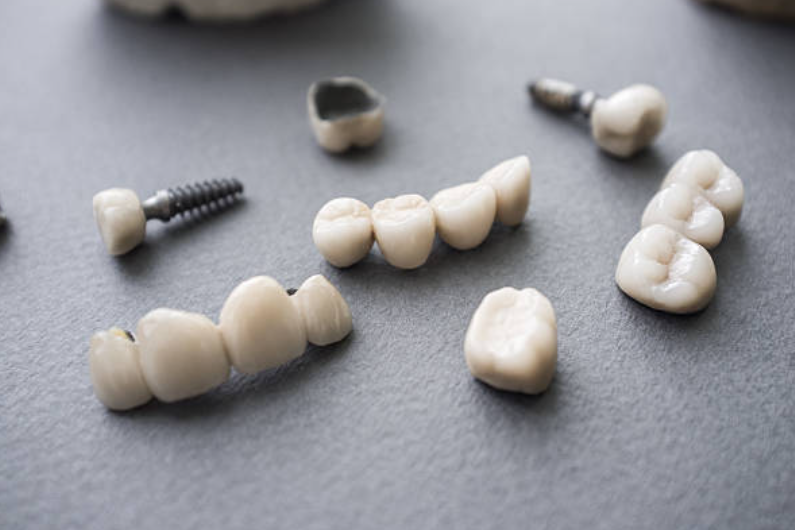
Ceramic Material Properties
Ceramic materials possess a wide range of properties that make them highly desirable for various applications. Understanding these properties is crucial in selecting the appropriate ceramic material for your specific needs. You can use Neway material selector to screen the material properties you need
Mechanical Properties
Ceramic materials exhibit excellent mechanical properties, including high strength, hardness, and stiffness. They are known for their exceptional wear resistance and ability to withstand high compressive forces. However, ceramics are brittle and have low tensile strength, making them susceptible to cracking under tensile loads.
Thermal Performance
Ceramic materials have outstanding thermal properties, including high thermal conductivity and resistance to thermal shock. They can withstand extreme high and low temperatures without significant deformation or degradation. These characteristics make ceramics suitable for applications requiring thermal insulation, heat dissipation, and resistance to thermal cycling.
Electrical Properties
Many ceramic materials possess excellent electrical insulation properties. They have high dielectric strength, low dielectric loss, and can withstand high voltages. These properties make ceramics ideal for electronic components, insulators, and high-temperature electrical applications.
Chemical Properties
Ceramic materials exhibit exceptional chemical resistance and inertness, making them highly suitable for harsh environments. They resist corrosion, oxidation, and chemical attack, allowing them to maintain their properties and structural integrity even in aggressive chemical surroundings.
Optical Properties
Certain ceramic materials possess unique optical properties, such as high transparency or opaqueness. Ceramics find applications in optics, lasers, and photonics due to their ability to transmit, reflect, or scatter light in specific ways.
Common CIM Ceramic Materials
Ceramic injection molding utilizes various ceramic materials to meet specific application requirements. Here are some commonly used ceramic materials in CIM: Materials Selector
Alumina (Al2O3)
CIM-Alumina (Al2O3) is one of CIM's most widely used ceramic materials. It exhibits exceptional mechanical strength, excellent electrical insulation properties, and high thermal conductivity. Alumina ceramic parts find applications in the automotive, electronics, and medical industries.
Zirconia (ZrO2)
Zirconia ceramics offer outstanding mechanical properties, including high strength, toughness, and wear resistance. They also exhibit low thermal conductivity and excellent corrosion resistance. Zirconia-based ceramic parts are utilized in demanding applications, such as cutting tools, biomedical implants, and components for extreme environments.
Silicon Nitride (Si3N4)
Silicon nitride ceramics combine high strength, excellent thermal shock resistance, and low density. They possess exceptional wear and corrosion resistance, making them suitable for automotive, aerospace, and chemical processing applications.
These are just a few examples of ceramic materials commonly used in CIM. The appropriate material selection depends on factors such as the desired properties, application requirements, and cost considerations.
Applications of Ceramic Injection Molding Parts
Ceramic injection molding parts find widespread use across various industries due to their unique properties and design flexibility. Let's explore some of the critical applications where ceramic injection molding is employed:
Automotive Industry
Ceramic injection molding is vital in the automotive sector, where components require high performance, reliability, and durability. CIM parts are used in engine components, sensors, fuel injectors, braking systems, and exhaust systems, benefiting from ceramics' thermal resistance, wear resistance, and chemical stability.
Electronics and Electrical Components
The electronics industry demands miniaturization, high precision, and excellent electrical properties. CIM enables ceramic parts to be produced in circuit boards, connectors, sensors, insulators, and capacitors. The superior electrical insulation and thermal management capabilities of ceramics make them ideal for electronic applications.
Medical and Healthcare Devices
CIM offers immense advantages for producing biocompatible and sterilizable ceramic parts in the medical field. Ceramic injection molding is used in dental implants, orthopedic implants, surgical tools, hearing aids, and diagnostic equipment. Ceramics provide a suitable material option due to their biocompatibility, corrosion resistance, and high strength.
Aerospace and Aviation Sectors
The aerospace industry requires components that withstand extreme temperatures, high mechanical stresses, and corrosive environments. CIM provides solutions for manufacturing ceramic parts in turbine blades, jet engine components, aerospace sensors, and structural components. Ceramic materials' excellent high-temperature performance and lightweight properties improve efficiency and reliability.
Industries Benefiting from CIM Technology
Apart from the aforementioned sectors, ceramic injection molding has applications in various industries. These include energy and power generation, telecommunications, chemical processing, defense, and precision engineering. CIM allows for producing intricate ceramic parts with tight tolerances, complex geometries, and enhanced performance.
Ceramic Parts in Various Applications
Ceramic ball bearings are used in industrial machinery for their high temperature and wear resistance properties.
Ceramic insulators are used in high-voltage applications for their excellent electrical insulation capabilities.
Ceramic cutting tools are used in machining for their exceptional hardness and wear resistance.
Ceramic nozzles are used in spray coating systems to resist abrasion and corrosion.
Ceramic implants are used in medical applications for their biocompatibility and durability.
These examples highlight the diverse applications where ceramic injection molding parts are utilized, demonstrating the versatility and value of CIM technology.
Why choose Neway for CIM
Are you in search of top-notch ceramic injection molding solutions? Look no further! Neway is thrilled to present our cutting-edge Ceramic Injection Molding service, tailored specifically to meet the demanding needs of professionals like you.
With our unrivaled expertise and state-of-the-art technology, Neway brings you a comprehensive suite of CIM solutions that revolutionize how ceramic parts are manufactured. Our advanced processes and meticulous attention to detail ensure the production of high-performance, complex ceramic components with exceptional precision and efficiency. Contact us today.
